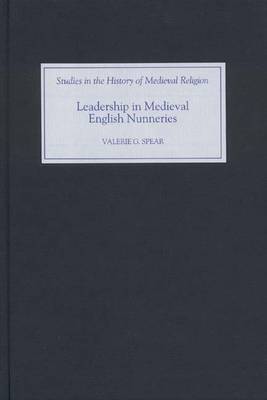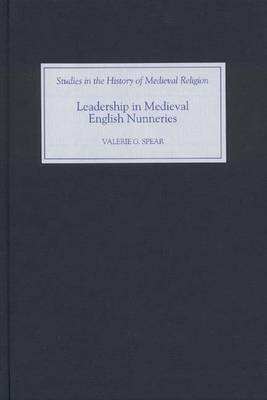
Bedankt voor het vertrouwen het afgelopen jaar! Om jou te bedanken bieden we GRATIS verzending (in België) aan op alles gedurende de hele maand januari.
- Afhalen na 1 uur in een winkel met voorraad
- In januari gratis thuislevering in België
- Ruim aanbod met 7 miljoen producten
Bedankt voor het vertrouwen het afgelopen jaar! Om jou te bedanken bieden we GRATIS verzending (in België) aan op alles gedurende de hele maand januari.
- Afhalen na 1 uur in een winkel met voorraad
- In januari gratis thuislevering in België
- Ruim aanbod met 7 miljoen producten
Zoeken
Omschrijving
The position of an abbess or prioress in the middle ages was one of great responsibility, with care for both the spiritual and economic welfare of her convent. This book considers the power wielded by and available to such women. It addresses leadership models, questions of social identity and the varying perceptions of the role and performance of the abbess or prioress via a close examination of the records of sixteen female houses in the period from 1280 to 1540; the large range of documentary evidence used includes selections from episcopal registers, account rolls, plea rolls, Chancery documents, letters, petitions, medieval literature and comparative material from additional nunneries. The theme of conflict recurs throughout, as religious women are revealed steering their communities between the directives of the church and the demands of their budgets or their secular neighbours. The Dissolution and its effects on the morale and behaviour of the last superiors conclude the study.
Specificaties
Betrokkenen
- Auteur(s):
- Uitgeverij:
Inhoud
- Aantal bladzijden:
- 266
- Taal:
- Engels
- Reeks:
- Reeksnummer:
- nr. 24
Eigenschappen
- Productcode (EAN):
- 9781843831501
- Verschijningsdatum:
- 15/07/2005
- Uitvoering:
- Hardcover
- Formaat:
- Genaaid
- Afmetingen:
- 160 mm x 241 mm
- Gewicht:
- 571 g

Alleen bij Standaard Boekhandel
+ 354 punten op je klantenkaart van Standaard Boekhandel
Beoordelingen
We publiceren alleen reviews die voldoen aan de voorwaarden voor reviews. Bekijk onze voorwaarden voor reviews.









